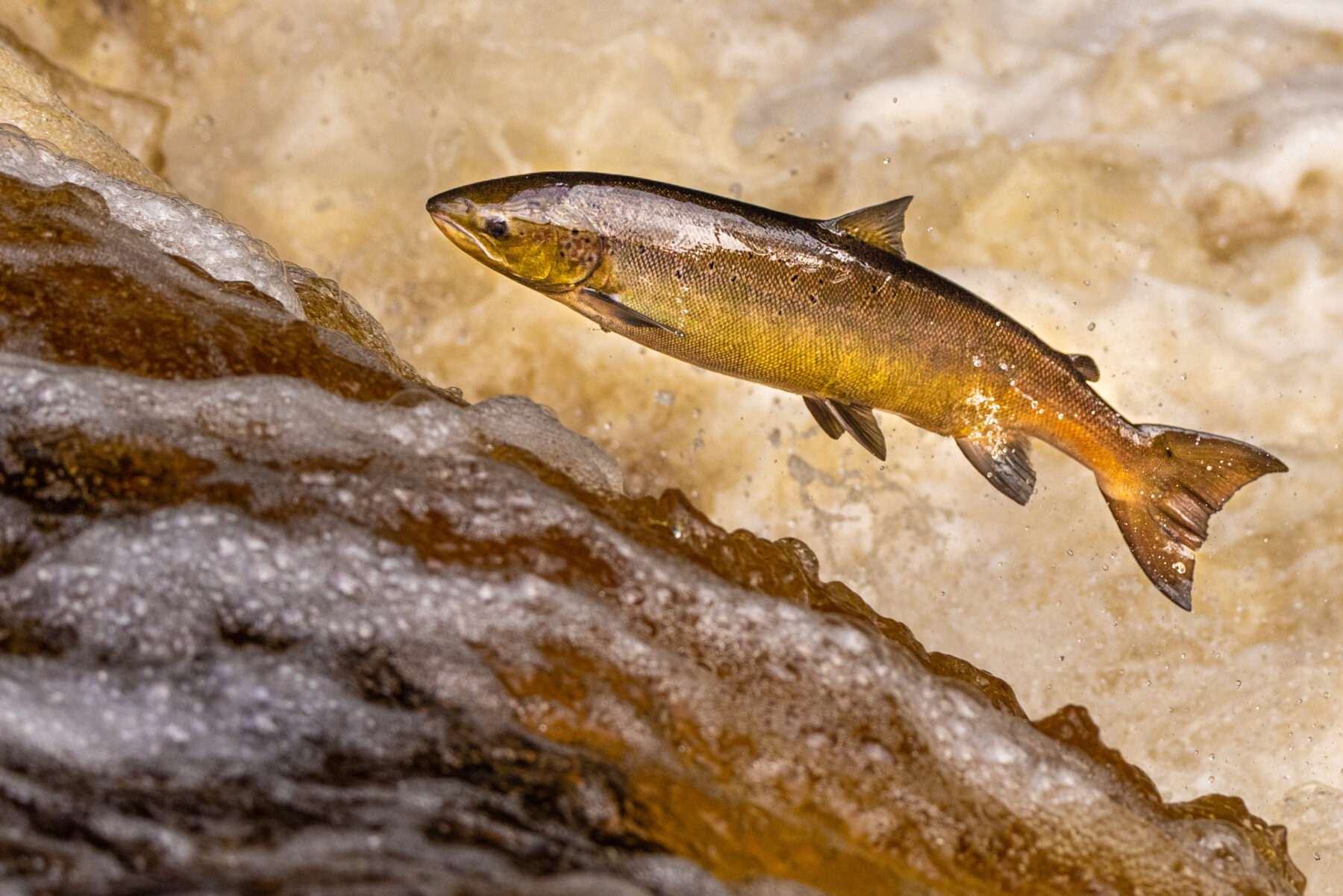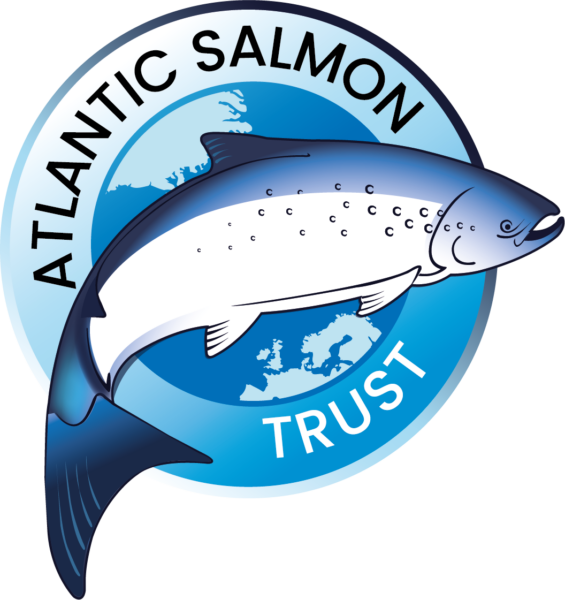Core Rivers programme publishes second year of returning adult salmon sonar counter data – the only two such systems currently operating in Scotland.
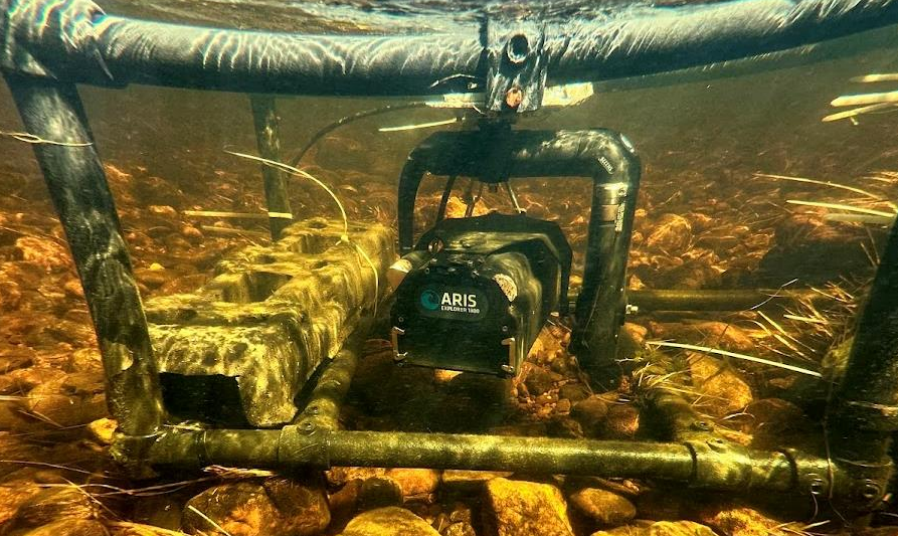
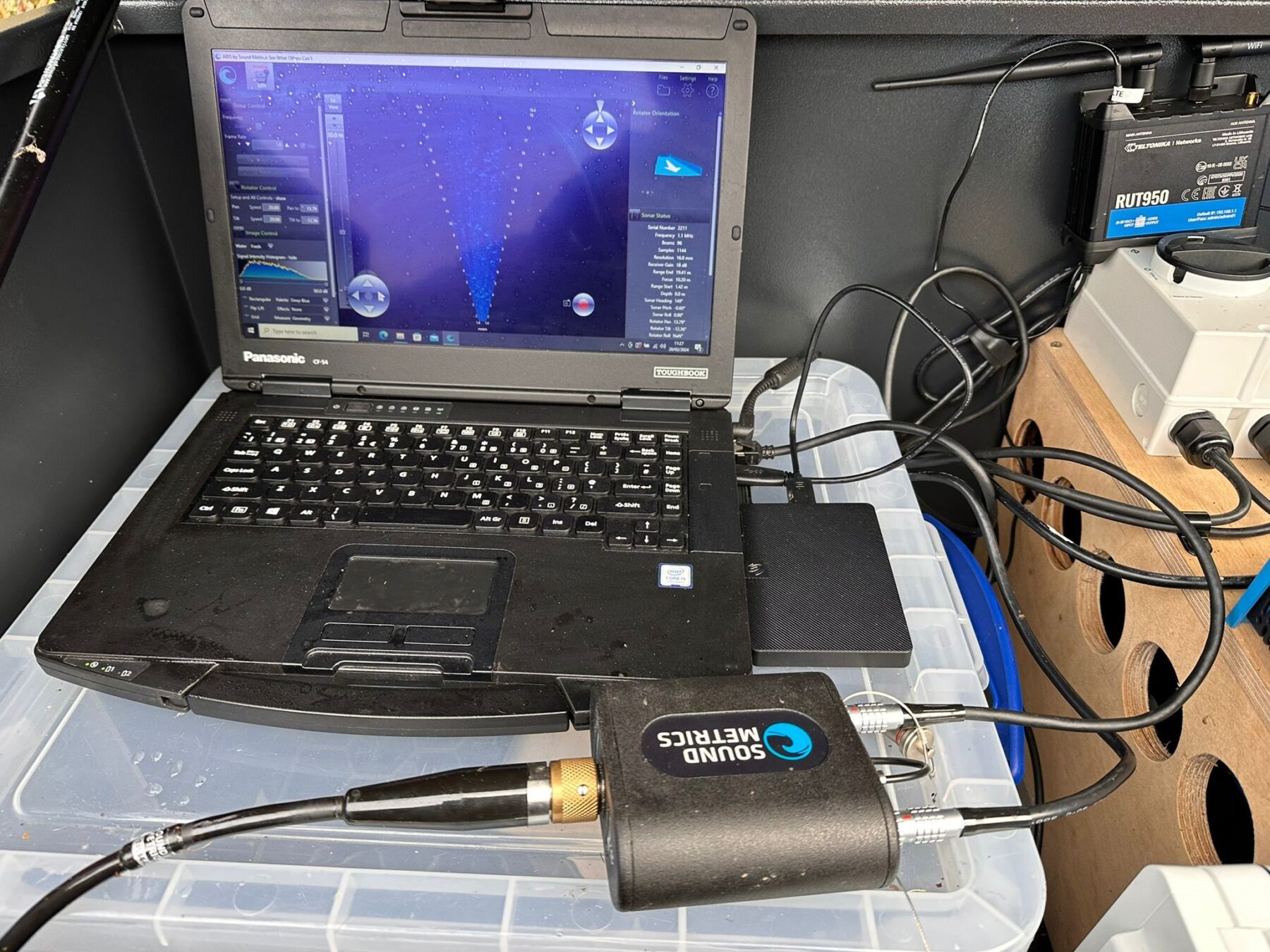
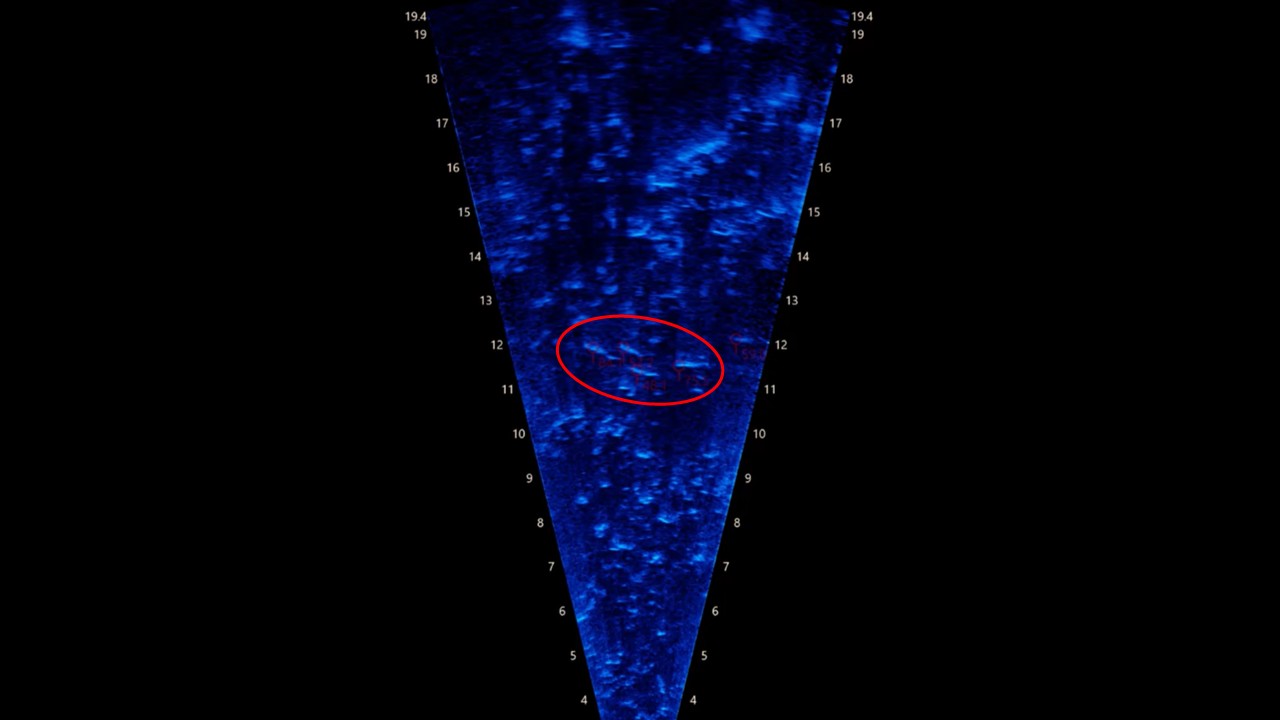
We are pleased to be able to publish the 2024 counter information from the Core Rivers programme – Project Laxford (a partnership with Grosvenor’s Reay Forest Estate) and Project Deveron (a partnership with the Deveron, Bogie & Isla Rivers Charitable Trust). This information marks the second annual count of returning adult salmon to each of these rivers, obtained via state-of-the-art ARIS (Adaptive Resolution Imaging Sonar) sonar fish counters. In both projects this equipment has been funded by the Scottish Government’s Marine Directorate and is operated by our local project teams, with the recorded data then modelled by the Marine Directorate.
How it works
The short video below demonstrates the type of video footage which ARIS sonar counters are able to record. On the left hand side of the screen the footage was filmed with a conventional underwater camera, and the footage on the right hand side is recorded by an ARIS counter. This clip from the Laxford shows a group of adult salmon passing the ARIS camera, identifying the number of individual fish and allowing an estimation of their sizes.
River Laxford 2024 returning adult wild salmon count
2023: 1,120
2024: 1,376
The River Laxford count was calculated to be 1,376 in 2024 (median), with a lower estimate of 1,318 and higher estimate of 1,434. This represents a 22.85% increase from 2023 when the median count was 1,120.
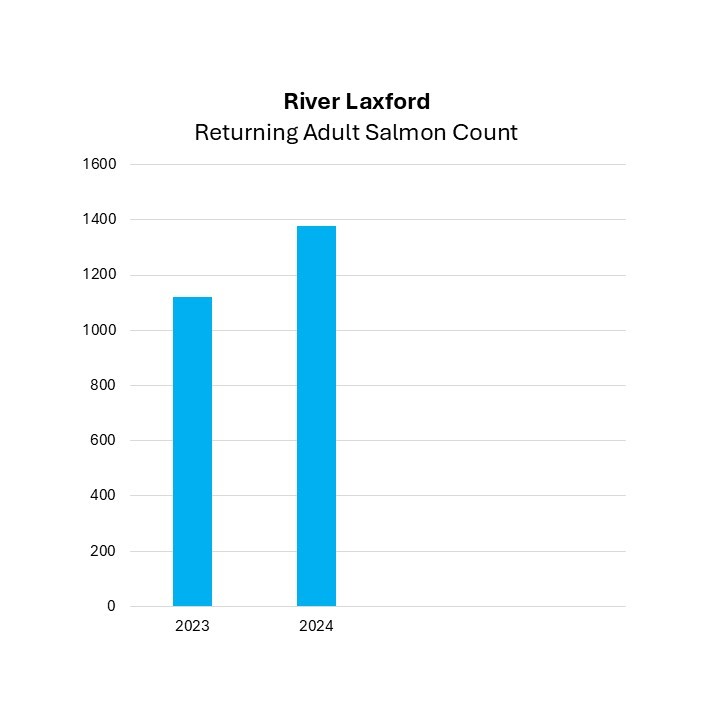
River Deveron 2024 returning adult wild salmon count
2023: 5,705
2024: 8,796
The River Deveron count was calculated to be 8,796 in 2024 (median), with a lower estimate of 8,617 and higher estimate of 8,982. This represents a 54.18% increase from 2023 when the median count was 5,705*.
Of additional interest to readers may be the rod catch rate on the Deveron over these two years. Figures show that 766 salmon were caught by anglers on the river in 2023, representing a 13-14% rod catch rate. The rod catch for 2024 was reported as 1,711, representing a rod catch rate of 19%. Thus, while the run size increased by 54% in 2024, angler catches increased by 123%. This insight reaffirms the importance of collecting accurate counts of returning adult salmon to gain a true picture of population changes from year to year.
*Note that the Deveron count for 2023 has been previously published as 5,600, however more recent modelling has revised this figure to 5,705.
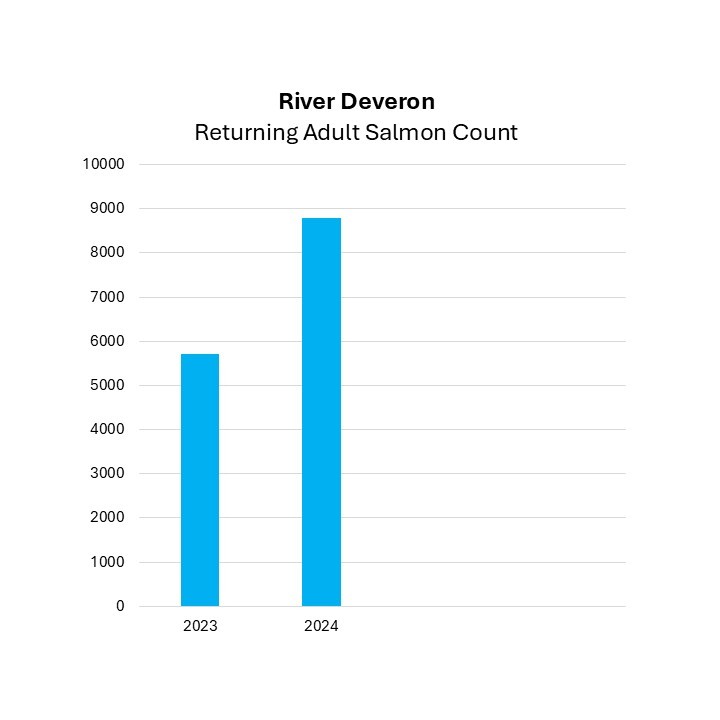
Why gather this information?
Working to link restoration to salmon numbers
Core Rivers combine catchment-scale habitat restoration with state-of-the-art monitoring of the wild salmon population and wider biodiversity. The aim is to implement large-scale restoration work in and around these river systems, to give wild Atlantic salmon free access to cold, clean water in a biodiverse and resilient environment. Combined with extensive monitoring of the wild salmon population and wider biodiversity, these projects aim to identify effective wild salmon recovery techniques, accurately measure their effect on the wild salmon population over time via sophisticated monitoring, and then share this information outward for the benefit of other river systems in the region.
Mark Bilsby, CEO of the Atlantic Salmon Trust said:
This is an excellent demonstration of the sort of cutting-edge technology currently being employed in the Core Rivers programme, the funding and operation of which is made possible through local and national public and private partnerships. We can look at historic trends to understand the decline in wild Atlantic salmon over past decades, but we hope that, over time, this new level of year-to-year accuracy will enable us to make a direct link between restoration efforts and recovering wild salmon populations in the future.
Core Rivers link in with a wider network of monitored ‘index’ river systems across the North Atlantic to enhance our collective understanding of wild Atlantic salmon populations and to support restoration efforts. Currently, the Laxford and Deveron are the only two rivers systems in Scotland producing total run counts with ARIS sonar cameras.
In addition to accurate returning adult salmon counts, these projects also employ large-scale PIT tagging programmes of 2,000 salmon parr each autumn to monitor changes in marine survival over time, as well as smolt counting work on the Laxford to estimate the total number of smolts being produced each year.
Supporting Scotland’s Nationwide Salmon Population Assessments
The Laxford and Deveron counter data is being used to assess the conservation status of salmon within these rivers. It is also being used to develop new methods to support the Scottish Government’s annual assessments of the health of wild salmon populations across the country. Each year, these assessments grade salmon rivers either ‘Good’, ‘Moderate’ or ‘Poor’ in relation to their likelihood of meeting their ‘Conservation Limit’ – the minimum number of eggs which need to be deposited by spawning adult salmon to enable the population to sustain itself.
Current river gradings can be accessed on the Scottish Government’s website: here.
